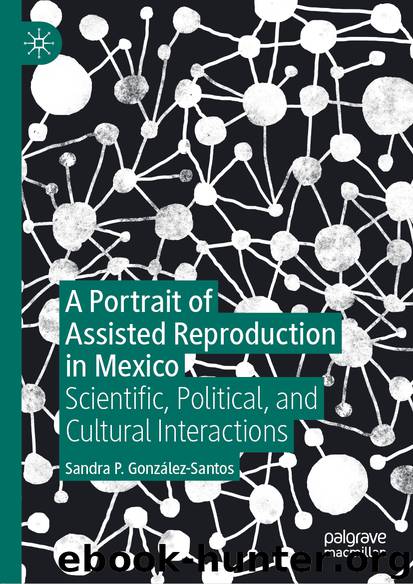A Portrait of Assisted Reproduction in Mexico by Sandra P. González-Santos

Author:Sandra P. González-Santos
Language: eng
Format: epub
ISBN: 9783030230418
Publisher: Springer International Publishing
Epistemic
These books had the objectives of offering a panorama of reproductive health in Mexico and an overview of the “state of the art” of the field. Simply by looking at the different sections and chapters, we can get an idea of the thematic conformation of the field, a sense of what the filed “is made of”, of its epistemic and moral composition, and of how this has changed. Although the books covered a wide range of topics related to reproduction,7 not all topics received the same degree of attention. As indicated by its editor, Vázquez Benitez in 2003, this unbalance “is a parameter of the current interest” in each of these areas.
In both editions, the section on assisted reproduction was the largest within the book. While the average was five chapters per section, the section on assisted reproduction had 15 chapters in 1999 and 20 chapters in 2003. One possible reason for this unbalance could be that by, the turn of the century, assisted reproduction had become the area of interest. But what exactly was assisted reproduction at that moment? What did it mean for the members of the association?
Assisted reproduction denoted “all those procedures aimed at achieving pregnancy that include manipulating gametes outside the body” (Pérez Peña, 1999: 249). It encompasses a range of techniques and procedures that included ovarian stimulation, artificial insemination, IVF, ICSI, pre-implantation genetic diagnosis, fertility preservation, and a variety of laboratory procedures and tools.8 These are procedures that have been underdeveloped for the past 100 years and that still today are undergoing constant transformations and re-inventions. They are procedures that are situated within a wider biotechnological scenario. For example, the announcement, in 1996, of the successful cloning of Dolly the sheep or the way the Human Genome Project (1990–2003) was carried out. Particularly, the way the two research groups raced towards completion, the international and public group and the Celera Genomics group, and the different political positions they held regarding knowledge production and ownership. These projects sparked global ethical debates and concerns regarding the political and commercial aspects of gen-related technologies. One example of these debates was concerning the techno-scientific and commercial paradigm followed out by Celera Genomics, a paradigm based on a particular way of sequencing genomes and on the premise that genes can be patented (e.g. breast cancer genes). The sum of the idea that genes are responsible for X condition (genetic determination), the claim that these genes can be found and manipulated, and the use of IVF resulted in the idea of manipulating these genes to eliminate undesired traits. Genetic editing, in the beginning, caused great concern with certain groups of people. For example, after the publication of a series of articles claiming to have found genetic alterations related to deafness, the community of deaf people became very concerned regarding what this will mean for them. Particularly if we take into account that they do not consider deafness to be a health issue. This drew attention to the question of how determinant
Download
This site does not store any files on its server. We only index and link to content provided by other sites. Please contact the content providers to delete copyright contents if any and email us, we'll remove relevant links or contents immediately.
| Anthropology | Archaeology |
| Philosophy | Politics & Government |
| Social Sciences | Sociology |
| Women's Studies |
Born to Run: by Christopher McDougall(7064)
The Leavers by Lisa Ko(6911)
iGen by Jean M. Twenge(5366)
Sapiens by Yuval Noah Harari(5294)
The Kite Runner by Khaled Hosseini(5083)
Spare by Prince Harry The Duke of Sussex(5072)
Machine Learning at Scale with H2O by Gregory Keys | David Whiting(4177)
Bullshit Jobs by David Graeber(4094)
Never by Ken Follett(3789)
Goodbye Paradise(3727)
Livewired by David Eagleman(3683)
Fairy Tale by Stephen King(3220)
A Dictionary of Sociology by Unknown(3031)
Harry Potter 4 - Harry Potter and The Goblet of Fire by J.K.Rowling(2990)
The Social Psychology of Inequality by Unknown(2939)
The Club by A.L. Brooks(2862)
Will by Will Smith(2791)
0041152001443424520 .pdf by Unknown(2784)
People of the Earth: An Introduction to World Prehistory by Dr. Brian Fagan & Nadia Durrani(2701)
